Alpaca Heaven: A Day at Sentinel Ranch Alpacas
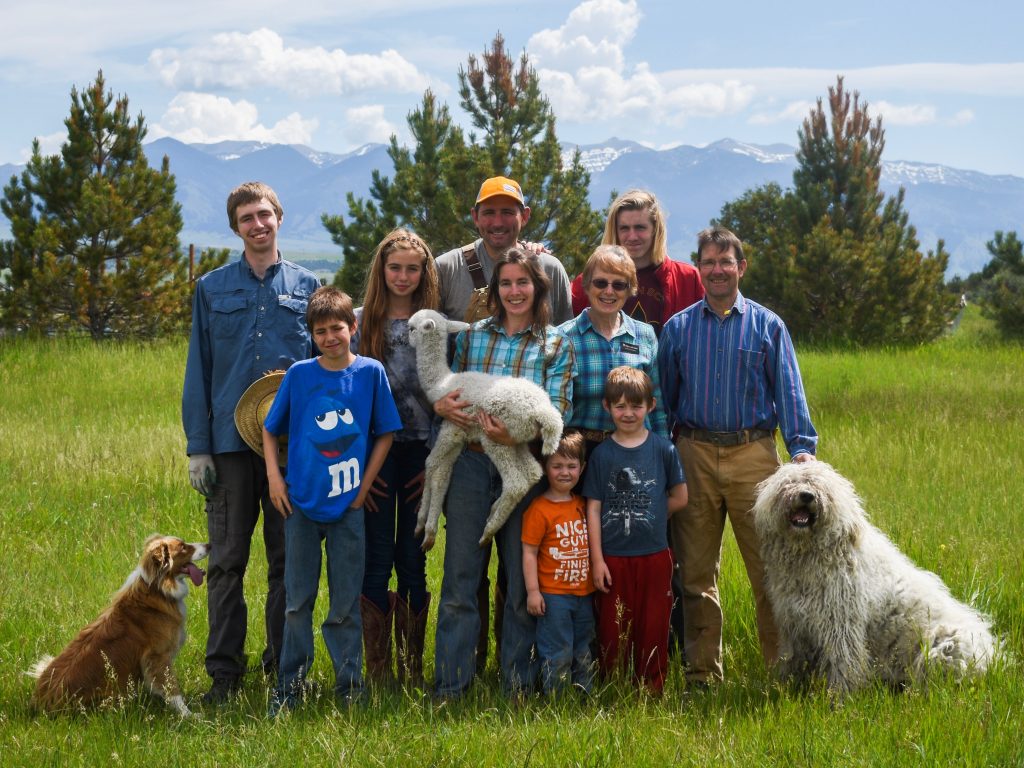
Photos, Lucas Belding
Yes, they are over-the-top, incredibly cute. And sweet. But Alpacas are so much more.
It started as a rainy morning the day we visited Sentinel Ranch Alpacas and owners Nathaniel and Anne Gullion. It was shearing season, something that happens only once a year. We had to wait for the rain to stop and the alpacas’ coats to dry out before the work could commence. In the meantime, I sat down to learn more about these fascinating animals.
A Family Affair
I began by asking how they got into the business and Anne quickly replied, “It was all my fault.”
The Gullions were looking for an entrepreneurial venture and their love of the outdoors drove them to do something related to the land. At a church luncheon, they heard someone talking about an alpaca ranch. The ranch was doing well and making money selling both the fiber and the animals. The Gullions stopped by an open house at the ranch to check out the operation.
“At the time, they had between 600 and 700 alpacas,” Anne explained. “They were so cute and friendly, it was kind of like a switch turned on. I also loved the family,” she went on to say. “They were close to our age, and I thought, ‘I want to be just like you guys.’ It was all they were doing to make their living.”
The ranch was having a pen sale, and the Gullions decided to take the leap and buy four alpacas. They put up fencing, feeders and shelters, and turned their backyard into a pasture. The rest is history.
The following spring they took the alpacas to a show, which they found to be full of friendly competition. “It was so cool,” Anne said, “They really wanted to be sure the alpaca community was successful.”
In a turn of events, the people who were mentoring the Gullions had a family member pass away. They needed to return to Chile and asked Anne and Nathaniel to take over the ranch while they were gone.
The herd was now down to 100 alpacas, and the Gullions threw themselves into the fire. Fortunately, the ranch hand stayed on, their older boys were excited to help, and Anne could bring her two small babies to the ranch. Each day she would check the herd health and look for new alpaca babies. They were on their way.
Today, the whole family helps on the ranch, from feeding to shearing to running the retail shop. They all have their roles and they are all happy to be doing the work—even the teenagers!
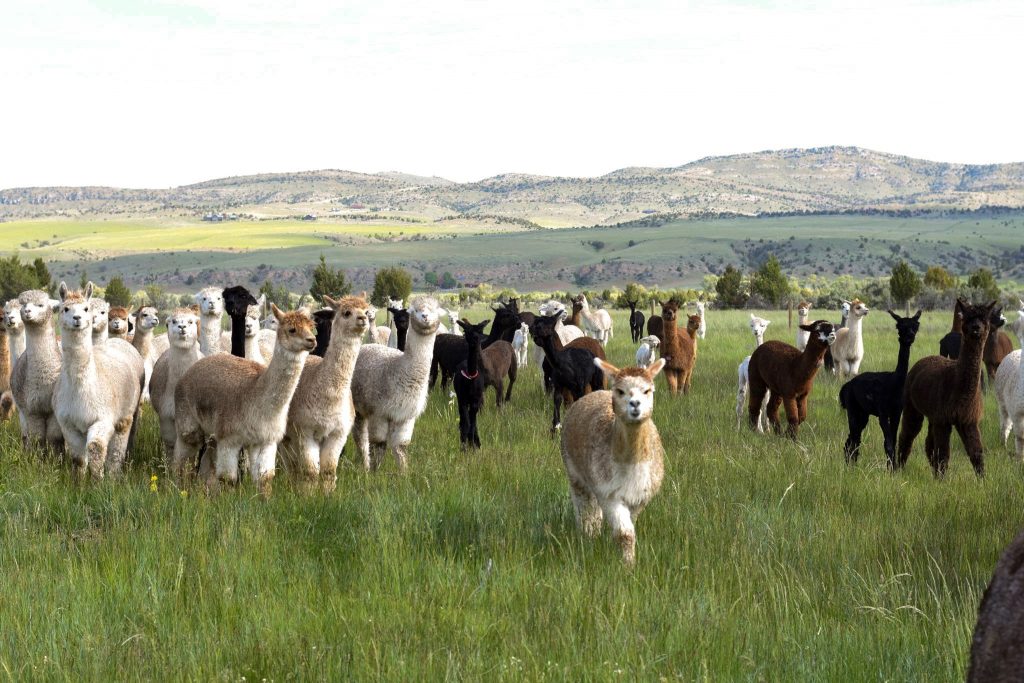
All About Alpacas
Alpacas are inquisitive, intelligent and easy to train. They love people and can recognize you by your smell. “The more courageous girls will walk up and smell your forehead,” Anne explained. “If you like it, just be still, but if you are uncomfortable, simply turn away and they will know. If you bend down, they will generally come right up to you.”
Originally from Peru, Bolivia, Ecuador and Chile, there are two different breeds of alpaca—Huacya and Suri. The most common, Huacya, (pronounced Wuh-kai-ya) look like fuzzy teddy bears, whereas the Suri, the rarer of the two, have long lustrous fleece that grows into dreadlocks.
Breeding alpacas is not your normal operation. For one, you can breed them any time of year. Female alpacas never go into heat; they drop their eggs AFTER breeding. They like to be pregnant, and are perfectly content throughout the eleven and a half month gestation period. When the baby comes, the mama and baby hum to one another, and always recognize each other’s voice. The mother sniffs the baby’s tail right at birth, cementing their bond. Once the baby’s tail is sheared, around the one year mark, the mom stops nursing.
Alpacas are more than just easy on the land—they can actually improve it. When they eat, they shear the pastures like a lawn mower, and form a perfect square when they graze. As such, pastures recover from grazing much faster than with other livestock. The alpaca digestive system is so efficient, it takes three days to digest their food. Their compost is just the right ratio of nitrates and phosphates, making it the best livestock compost there is. Alpaca fleece can be used for weed control, and can also be turned into the soil for aeration.
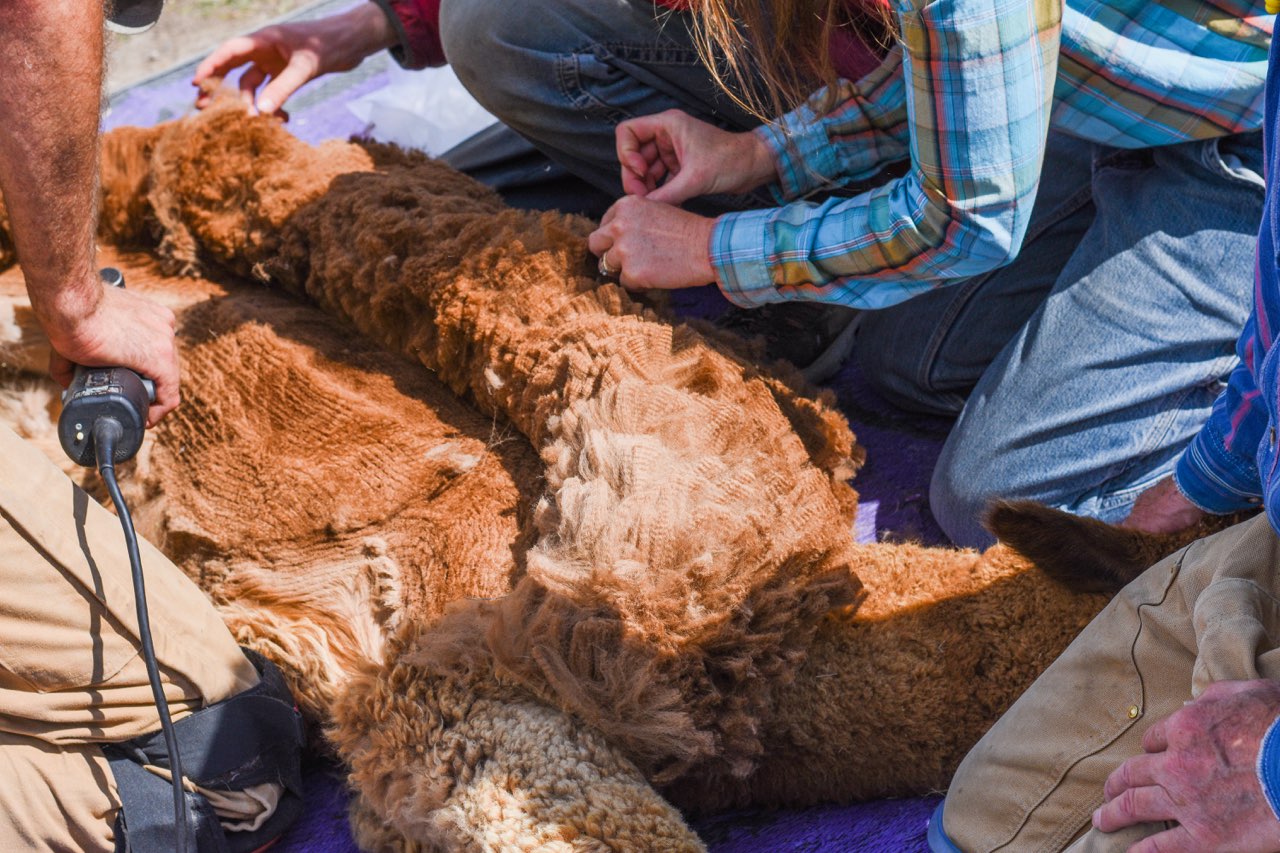
The Story of Fiber
The rain stopped and the sun was shining so we headed outside to check out the herd and begin the shearing process. The herd of 400 was separated by male and female, and when we stepped into the female pasture, they came bounding up. Even the most stoic of souls would melt at this sight. All 150 females have names and Anne knows them all individually—a feat I can’t quite get over.
They separated the first few alpacas and prepared to start shearing.
Alpaca fiber (or fleece) is ten times stronger than sheep wool, four times lighter than goose down, wicks away moisture, and can be machine washed and dried on a cool cycle. And let me tell you, if you’ve never felt it, you will be blown away by how soft it is!
Shearing is an art, and Nathanial has mastered it. Knowing the importance of a tight profit margin, he attended sheep shearing school in eastern Washington to learn to do it himself.
It takes time to learn the shape of alpacas, and the technique is tricky. The length has to be continuously the same or you can ruin the blanket. It takes a long, consistent shear to have it come out right.
“You need a team of people to shear an alpaca,” Nathaniel explained. It takes two people to hold the animal, one person to shear, and one to cut their nails and teeth, spray their ears and take care of any other health needs. “Most of the girls are really good about shearing,” he said. “They feel relieved from the heat. The boys wince, scream, buck and spit. They are the biggest babies!”
The fiber is separated as it is sheared and all of it is utilized. The best fleece, the main blanket over their backs, is used for the items that fall against your skin such as scarves and sweaters. The second nicest fiber is mainly used for socks and some sweaters, and the least attractive fleece, found around the legs, can be made into things such as dryer balls, insoles and rugs.
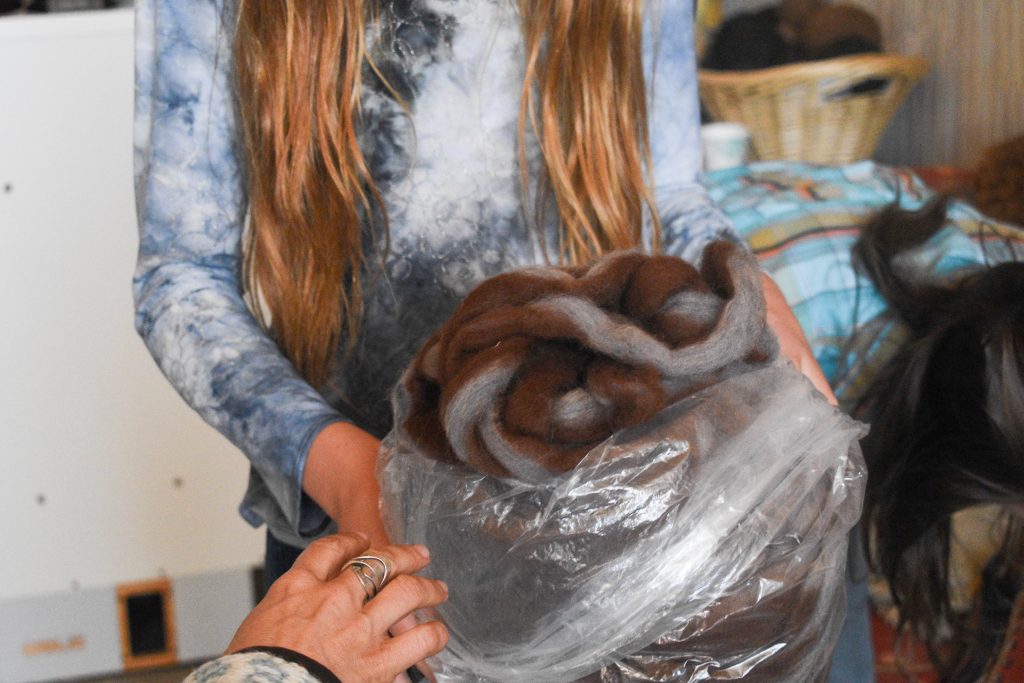
The majority of the fiber from the ranch is sent to a Peruvian mill where they process two major runs per year, one specifically for the Gullions and one for a shop in Seattle. “If something is really popular, we might do a couple of smaller batches,” Anne explained.
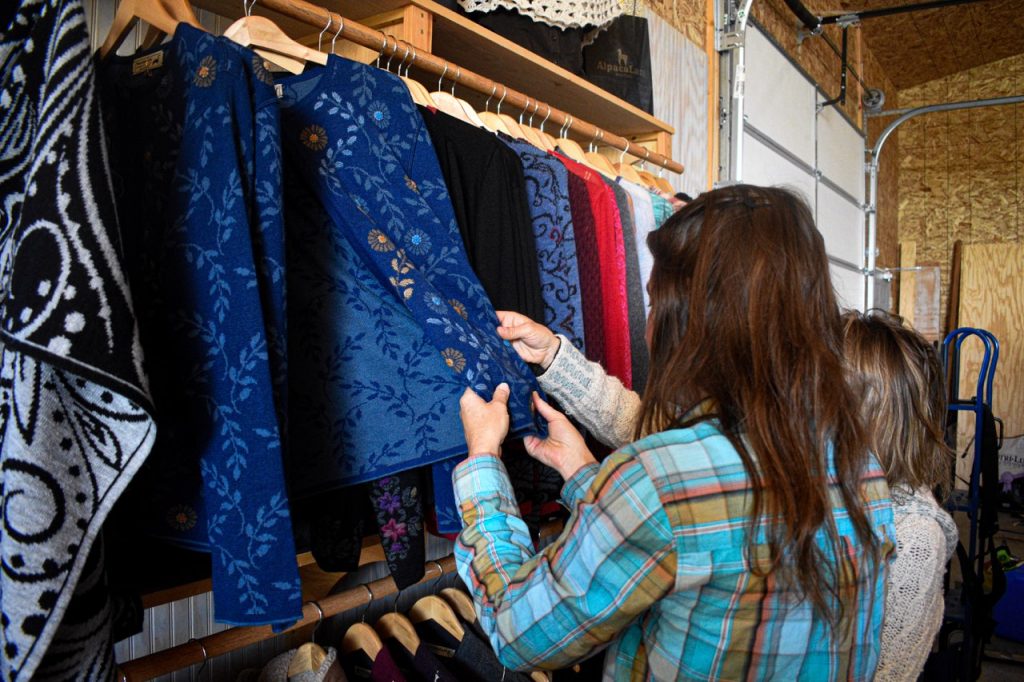
The Goods
It’s hard to walk through the retail store without wanting pretty much everything. Products range from practical socks to elaborate sweaters and hats trimmed in fur. There are gloves, vests, rugs and super soft stuffed animals. The colors range from bold and vibrant to deep and rich.
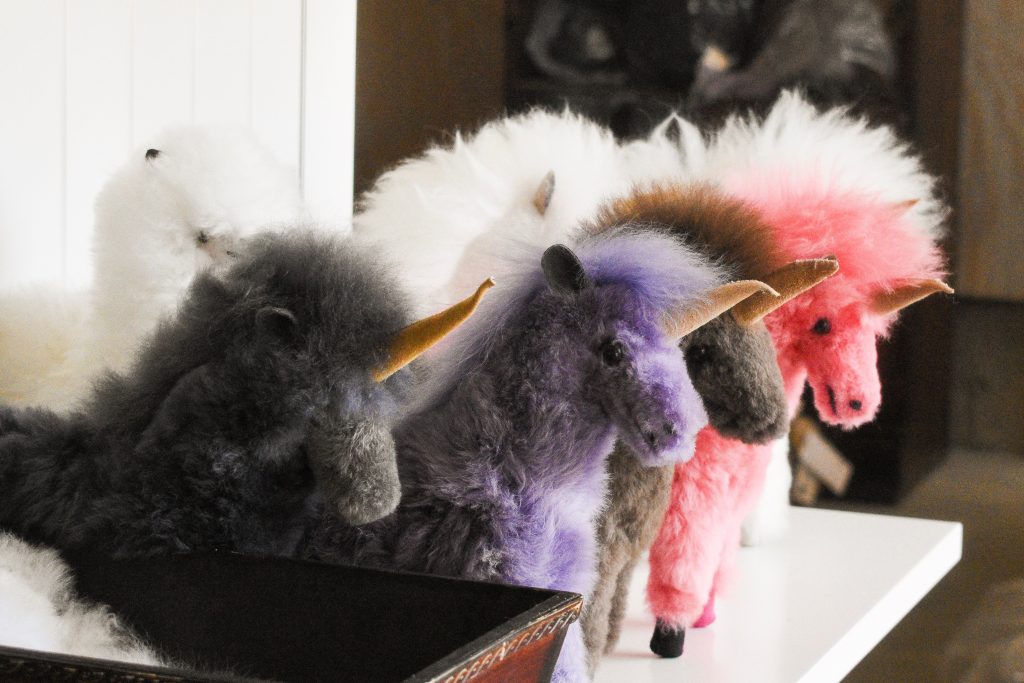
While the fiber products are the mainstay of the operation, we would be remiss to not talk about the meat. I had never heard of eating alpaca, and apparently not many others have either. When alpacas were first imported to the United States, it was by businessmen rather than ranchers. In South America and Australia, every part of the animal is utilized, but in the U.S. they were brought in as exotic pets and sold for large amounts of money. However, unlike other livestock, alpaca aren’t raised for their meat. Instead, as they age and are no longer producing, the herd is culled.
Intrigued, we bought some ground meat and chorizo. It was delicious. Nutritionally speaking, it’s low in cholesterol, high in protein and leaner than venison. However, even older meat remains tender, so you can’t overcook it as you can with venison. I found the taste to be rich and incredibly satiating.
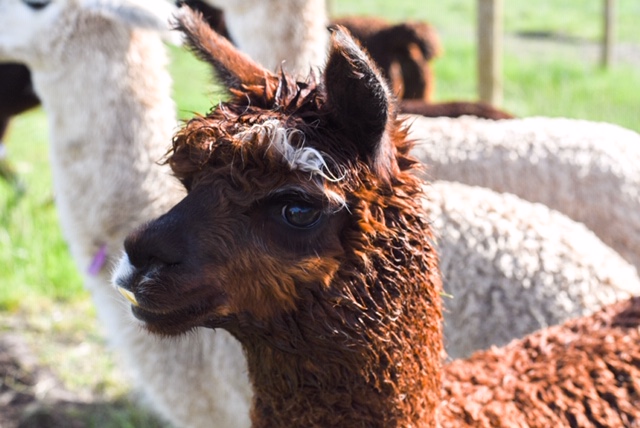
Caring Means Sharing
The Gullions love to share both the ranch experience and their alpaca knowledge. Visiting the ranch is more than just looking over the fence; they bring people into the field and let them hand feed the animals. “We try to educate people about the benefits of the industry,” Anne said. “This could be a huge benefit to United States ranchers; it could really allow them to diversify.” In Australia, many ranchers are raising alpacas instead of sheep. “Alpacas are environmentally better than sheep,” she explained. “They are gentler on the land, easier to care for and have less parasites.” The soft, warm fleece is also worth more.
Anne went on to say, “We want people to come here and be with the animals, to have an experience they will remember. Often people are timid about livestock, and when they meet the alpacas they can’t believe how gentle, curious and soft this big animal is. They are just amazing.”
Sentinel Ranch and the retail store are open Monday through Saturday from 10:00 a.m. – 5:00 p.m. The ranch is open to the public and free of charge. It’s not necessary to make an appointment, but Anne recommends calling ahead so someone can be there to show you around!
Sentinel Ranch Alpacas formerly in Belgrade, is now located in Roberts, Montana.
www.sentinelranchalpacas.com


